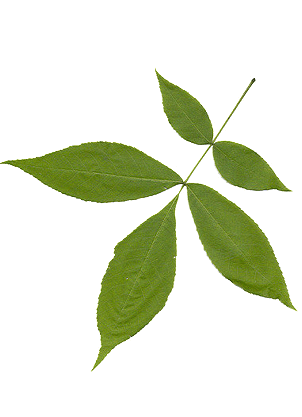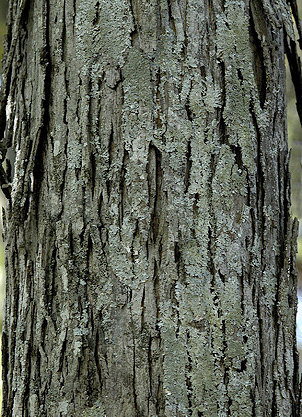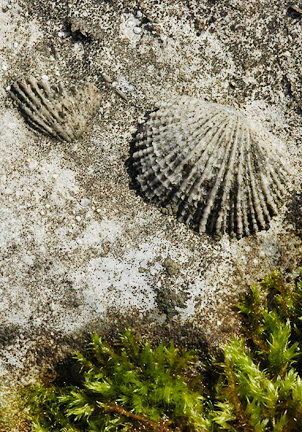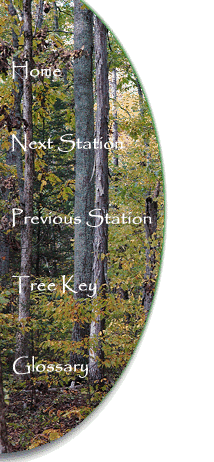| |
|
| |
 |
| |
Shagbark Hickory Leaf |
Identification:
Each leaf is composed of 5-7 leaflets.
The leaves are alternate,
toothed and
pinnately
compound.
The leaves are smooth to lightly hairy above, and hairy below. Total length of the leaves vary from 8 inches to
16 inches. With a hand lens you can see fine hairs
along the margins of the leaves (margins are
ciliate), a characteristic that distinguishes
Shagbark Hickories from all other hickories. As the tree loses
its leaves, you may be able to get a better look at the alternate
branching on this species. Although Hickories and Ashes have
leaves that are similar, Hickories have alternate branching
while Ashes have opposite branching. You will get
a chance to see the opposite branching of the ashes at Station Two.
| |
|
 |
|
|
Shagbark Hickory Bark |
True to its name, the bark of the
Shagbark Hickory is broken into shaggy scales that are attached to
each other by their edges. On large trees these scales can be
over a foot long and six to eight inches wide. The scales
start to form when the tree's diameter is from 4 to eight inches.
Lichen is often seen on the scales, and on older trees the scales
can be large enough that small animals can find shelter beneath
them. Some species of bats have been observed doing this, and
treefrogs are said to use them as well.
| |
|
| |
 |
| |
Shagbark Hickory Twig and Buds |
The twigs of the Shagbark Hickory
are stout and dark reddish brown with orange
lenticels.
The terminal buds are 1/2 inch to 3/4 inches long. The
bud
scales are imbricate. Note the
alternate pattern on the
buds and leaf scars. The leaf scars
are heart-shaped.
Other Uses
and Lore:
Hickory wood burns
quite hot as firewood, and the fuel value of the wood is higher than
any other American wood except locust. The wood is also prized for
smoking country hams and other meats. General Andrew Jackson was
nicknamed “Old Hickory” after one of his men said that he was “tough
as hickory.” Until a tornado destroyed them in 1998, six shagbark
hickories stood as sentinels over Jackson’s grave at the Hermitage.
The Trail From
Station One to Station Two
 |
| Old Life and
New Life |
From Station
One the trail continues to climb until it turns to the left and
crests the ridge. There is a glade-like area here that is a
good place to look for fossils on the exposed limestone faces.
Evidence of ancient marine life is all around you. Just past
this point, the trail splits and you will want to take the left
fork. The trail descends along the west side of the ridge.
Just a short distance after the fork in the trail, you will come to
Station Two on the left side of the trail.
|

